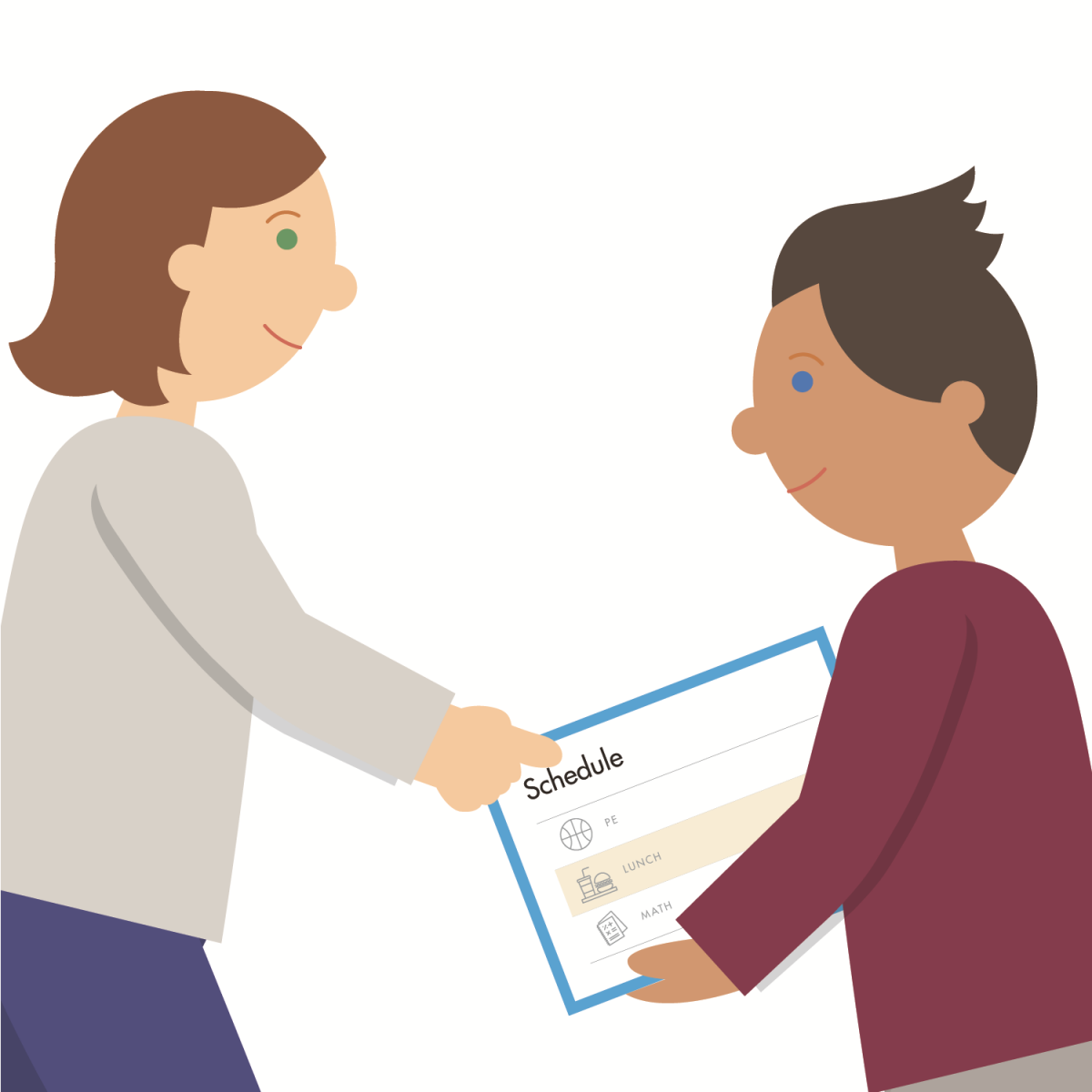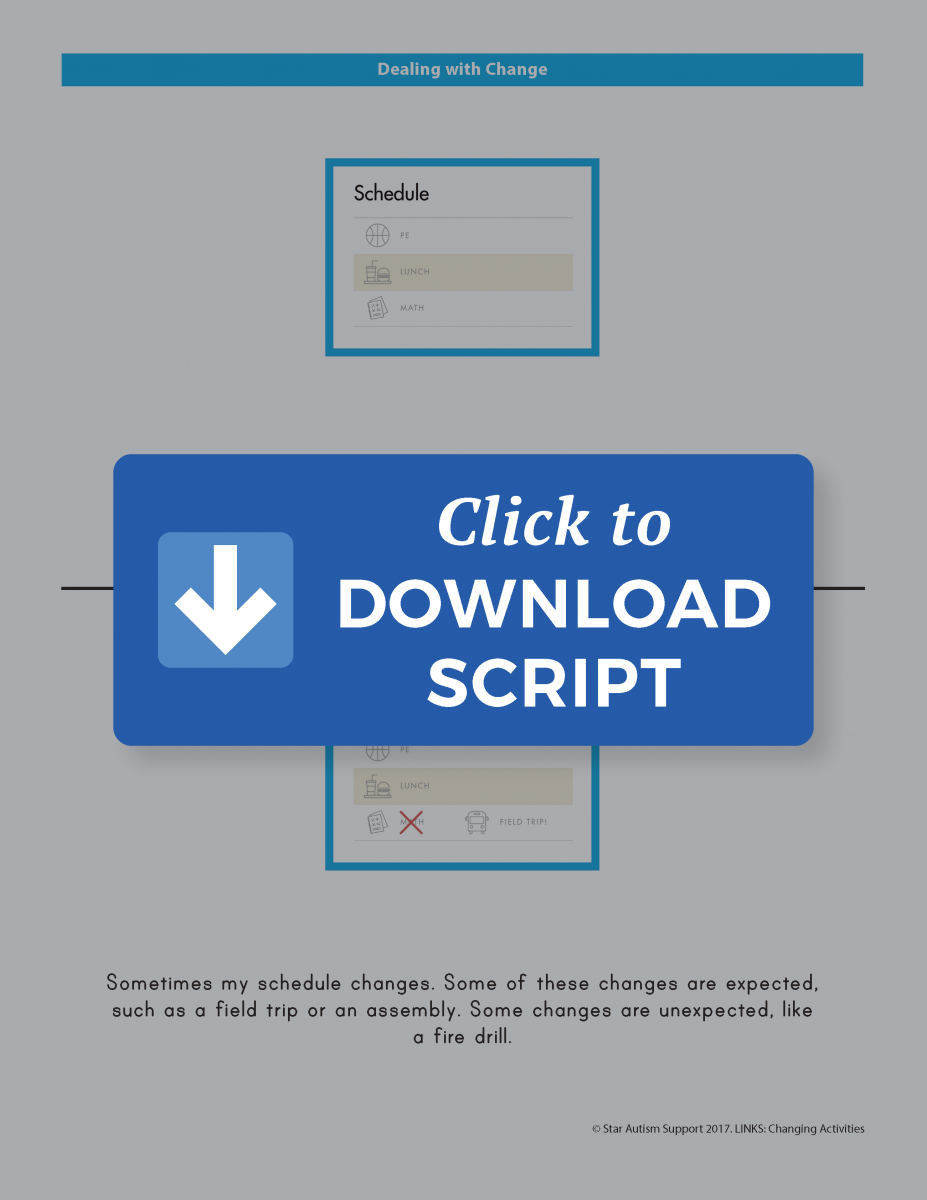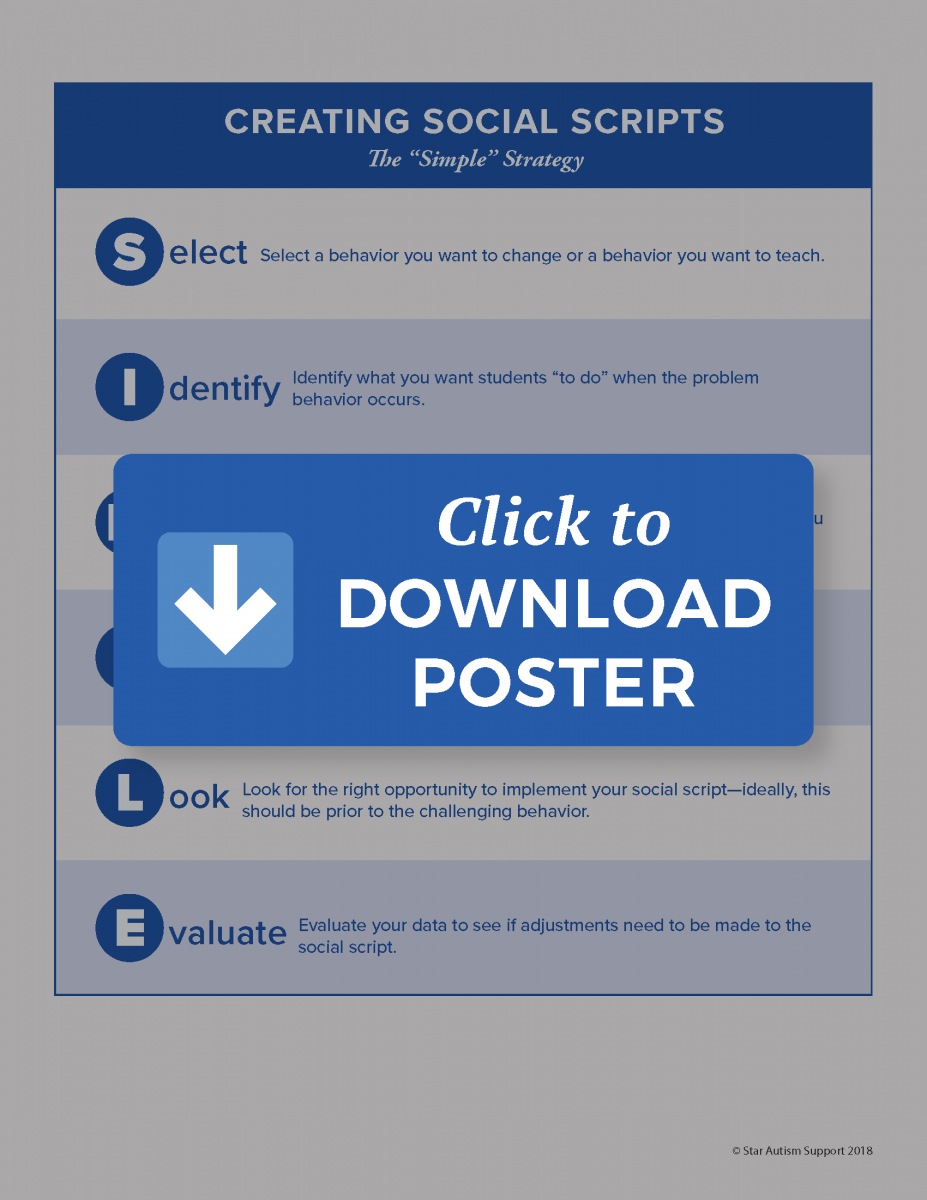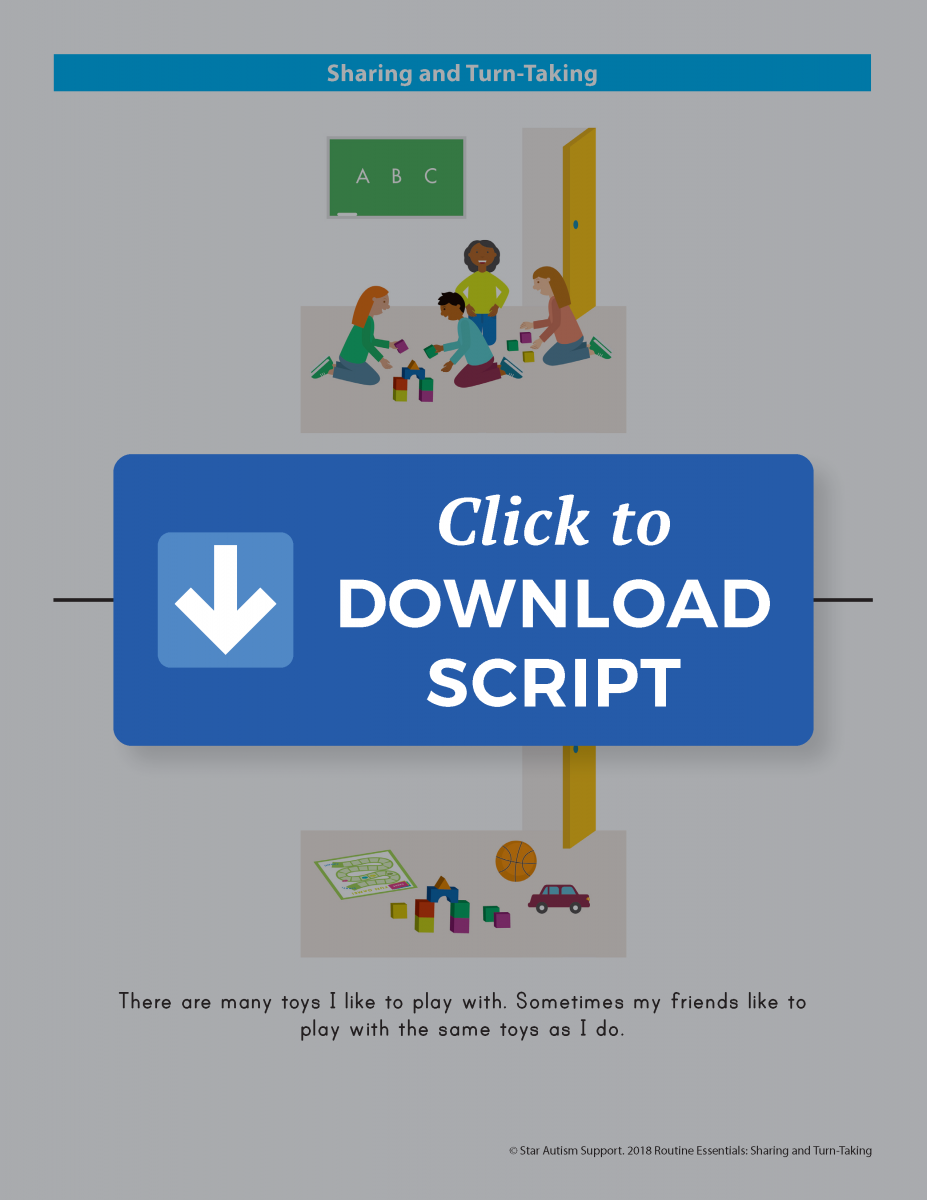Simple Social Scripts That Work
Have you ever learned a new skill from browsing social media, watching instructional videos, or reading a book? If you have, then you have personally experienced the power of social scripts. The use of social scripts for social instruction is an evidence-based practice identified in the National Autism Foundation’s National Standards Report.
Social scripts teach social skills, behavioral skills, and problem-solving in a story format that is individualized to the student. You do not have to be an expert in social scripts or have hours of extra time to effectively use this intervention. Below are some easy tips for creating custom social scripts.
Keep it SIMPLE:

S - Select
When Johnny’s visual schedule is changed due to an assembly, Johnny drops to the ground and does not comply to the cue, “Stand up.” This is a perfect opportunity to use a social script.
We use this tool to teach conflict resolution, routine steps, socializing with peers, asking for help, etc.
I - Identify
Identify what you want students “to do” when the problem behavior occurs. This explanation should be specific—though avoid making it too complicated. Keep it simple, age appropriate, and aligned to the student’s functional ability. In our example, Johnny’s teacher would now identify the behavior she wants to see from Johnny, in place of his current behavior.
Depending on Johnny’s functional ability, this behavior might include any or all of the following directions: asking for help, going to the location on the visual schedule, following a direction, etc.
M - Make
Once you define a challenging behavior and decide what you want the student to do instead, you’re ready to make your social script. Keep the wording and visuals simple and clear. Create your own social script or use a Media Center Routine Essentials social script—like this one.
If you’re a secondary teacher, use a Featured Routine social script, like the Responding to an Unexpected Change script we’d use for Johnny in the example above.
P - Perspective
Create the social script from the student’s point of view. Utilize plenty of visuals so the student can visualize what they’re supposed to do. If appropriate and applicable to the situation, use pictures of the student in the setting where the challenging behavior often takes place.

Begin by having the student read or review the social script when things are going smoothly. If the problem is triggered by a specific part of the day, review the social script prior to that time of day. Look for the right opportunity to implement your social script.
When the student is calm after the challenging behavior, review the social script again.
E - Evaluate
Don’t forget to take data on how the student implements the strategies presented in the social script. You can also track data by creating a routine in LINKS or STAR that is aligned to the social script!

Once you have data, evaluate to see if adjustments need to be made to the script based on your data.
Keep in mind that evidence-based practices work well together: the more you can incorporate social scripts along with DT and PRT, the better. Work on generalization by having the student use the social script in different settings and with a variety of individuals, if the data is showing evidence of mastery. Generalization of skills will continue to grow your student’s ability to handle new situations and people they encounter.
Social scripts are best when they’re simple and consistent—here is a free visual to help you along the way.

